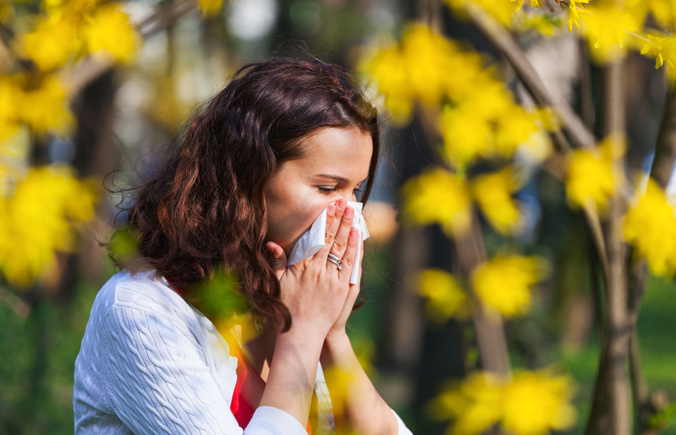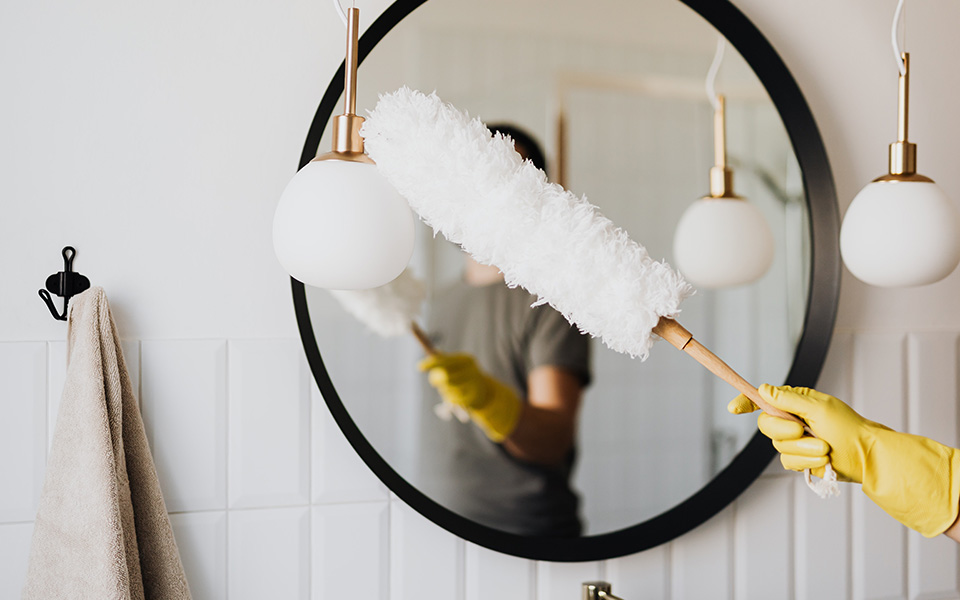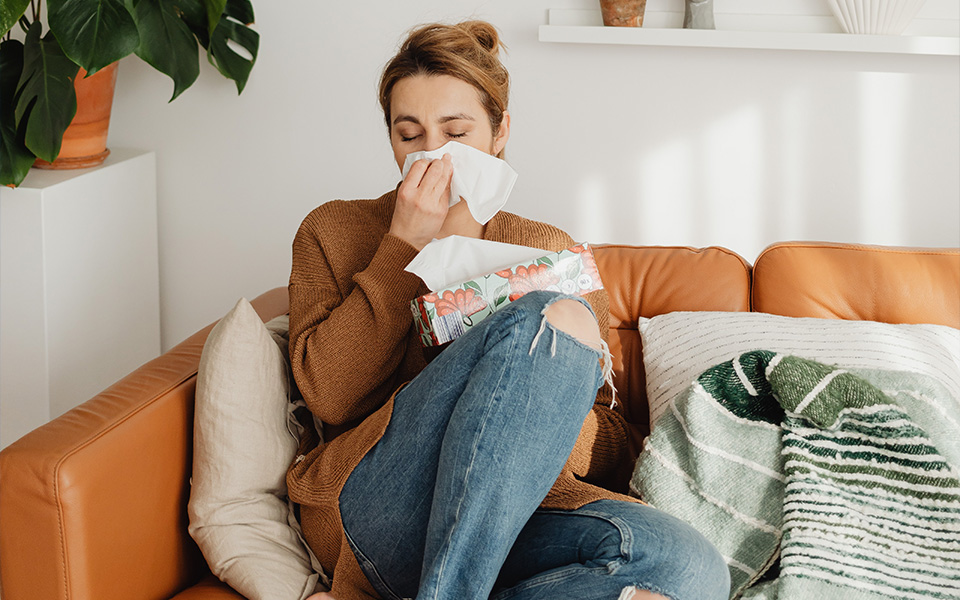Allergies are the fastest growing chronic disease in Australia, with over 4.1 million Australians having at least one allergy during their lifetime. Allergies are most common in children and adolescents, and include allergies to food, insects, drugs, and pets. It is predicted that the number of Australians with allergies will increase to over 7 million by 2050. Therefore, it is important to recognise the symptoms of allergic reactions and how to prevent them.
What is an allergy?
An allergy is when our immune system overreacts to something that interacts with our body that is typically harmless to the majority of people. Allergic reactions are triggered by allergens, and allergens can be found everywhere (in the air, our food, drinks and in the general environment). Common examples are pollen, insects, certain food, latex and pets. Typically, most people do not react to allergens. However, in some cases allergic reactions can result in a wide variety of symptoms, ranging from mild headaches and sinus problems to life-threatening Anaphylaxis reactions.
Top 7 Most Common Allergies

1. Food Allergies
Food allergies are one of the most common allergies experienced by people all over the globe. The latest research suggests that a whopping 3.7 million Australians are affected by food allergies; food allergy symptoms are most common in children under 5 years of age. The good news is that most of these children “outgrow” or become “tolerant” to their allergy with the passage of time.
While any food item can theoretically trigger an allergic reaction, there are eight types of food items that are notoriously famous for causing allergies. These are Milk, Fish, Eggs, Peanuts, Shellfish, Soy and Tree nuts.
In addition to this, some people are also allergic to certain seeds such as mustard and sesame seeds.
Food allergies can affect the gastrointestinal tract, the respiratory tract, the skin, and the cardiovascular system. Some of the most common symptoms of food allergies are repetitive coughing, vomiting, wheezing, stomach cramps, tongue swelling, hives, weak pulse, shortness of breath and Anaphylaxis.
Sadly, there is currently no cure for food allergies, which means the best way to prevent food allergies is to strictly avoid the food items that trigger them in the first place. To minimize your exposure to food allergens, always read and understand food labels and be careful of potential cross-contamination when preparing food. Tell the wait staff about your food allergies when you’re ordering food at a restaurant. Know the symptoms of your food allergies and always carry an emergency medical kit.
2. Skin Allergies
Skin allergies effect hundreds of thousands of Australians each year, which can have a significant impact on their work and family life. Anything from pollen and cigarette smoke to dyes and fragrances can trigger an allergic reaction if it comes in contact with the skin. Skin allergies can also be triggered by certain food items and medications or illnesses. Some common triggers of skin allergies are pollen, laundry detergent, sunlight, soap and certain chemicals.
Some of the common symptoms of skin allergies include redness, scaling, rash, cracked skin and swelling. Unfortunately there is no cure for skin allergies which means the best way to prevent skin allergies is to strictly avoid anything that triggers them in the first place.
Skin allergic reactions have sometimes been shown to cause long term skin disorders. Eczema (atopic dermatitis), Hives (urticarial) and Contact dermatitis have all been shown to be a result of skin allergic reactions.
3. Dust Allergies

Dust is everywhere in the environment and unfortunately it can cause an allergic reaction for some people. Increased quantities of dust in the air can cause some people to experience symptoms such as sneezing, coughing, runny nose, dry throat and itchy eyes.
These reactions are a result of allergens in dust. Some common allergens include mites, mold spores, sand, animal dander and hair. Hay fever, a type of dust allergy, is caused by seasonal allergens such as pollen.
The best way to manage a dust allergy is to minimise your exposure to dust or similar triggers. It is impossible to live in a completely dust-free environment, but you can minimise the amount of dust in your home. Other than regular cleaning of your home, you can avoid using carpets, keep pets outside and use HEPA air cleaners.
4. Pet Allergies
There are millions of Australians who live with pets, but for the unfortunate few, pets (particularly cats and dogs) can cause an allergic reaction to people who come in contact with a pet. Proteins found in pet urine, hair dander, fur, saliva and skin can trigger an allergic reactions in some people. Additionally, pet fur and hair can also collect airborne allergens such as pollen and spores which can aggravate asthma symptoms in some people. Some common pet allergy symptoms are rashes, hives, sneezing, coughing, wheezing and itchy eyes.
If you are allergic to pets, the most effective way to manage or prevent pet allergic reactions is to avoid being around cats and dogs or other pets. Additionally you can keep pets out of living areas and off of furniture. You can also avoid using carpets, clean your home regularly and use HEPA air cleaners.
5. Mold Allergies
Molds aka fungal spores are found everywhere, indoors and outdoors. We all breathe these tiny fungal spores whenever we inhale, but for some people, inhaling too many mold spores can cause an allergic reaction, if you have mould in the house, it is crucial to do mold removal to prevent bigger health issues.
When inhaled in substantial quantities, these mold spores get deposited on the inside lining of the nose and can trigger asthma symptoms. Some common symptoms of mold allergies are nasal congestion, sneezing, runny nose, watery eyes and hives, but you need to find a company to clean mold because this can cause serious problems to your health.
Like any other type of allergies, the best treatment for mold allergy is to avoid or minimise mold exposure. There are many practical steps you can take at your end to reduce or eliminate mold spores from your living environment. You can use dehumidifiers and air conditioners to control the amount of moisture in the air in order to prevent mold growth. You can also use HEPA air cleaners, clean regularly and keep bathroom surfaces dry.
6. Drug Allergies

Typically, drugs result in a reaction that is typically a side effect of taking the drug. However, in some cases, the drug may cause a person to experience an allergic reaction which is not a side effect. Some common symptoms of drug allergies are irregular heartbeats, rash, hives, swelling, wheezing and fainting.
While not all drugs cause allergic reactions, some common causes of drug allergies are aspirin, chemotherapy drugs, penicillin, anticonvulsants and anti-inflammatory drugs.
If you are allergic to certain medications, ask your doctor about alternative drugs and consider wearing a bracelet or carry a card that identifies your allergy to drugs in case of a medical emergency.
7. Latex Allergies
Latex is a natural substance (sap) that comes from the rubber trees and used for making many commonly used products such as rubber bands, rubber gloves, condoms, toys, balloons, toys, bandages, and rubber balls. Contact with the products that are made with rubber can cause allergic reactions in some people. Some common symptoms of latex allergies are rashes, swelling, hives, wheezing, coughing, diarrhea and vomiting.
The best way to avoid allergic reactions to latex is to avoid or minimise your usage of products containing latex. You should try to use non latex alternatives for products such as gloves or condoms.
Southgate Medical Centre
Doctor Melbourne

